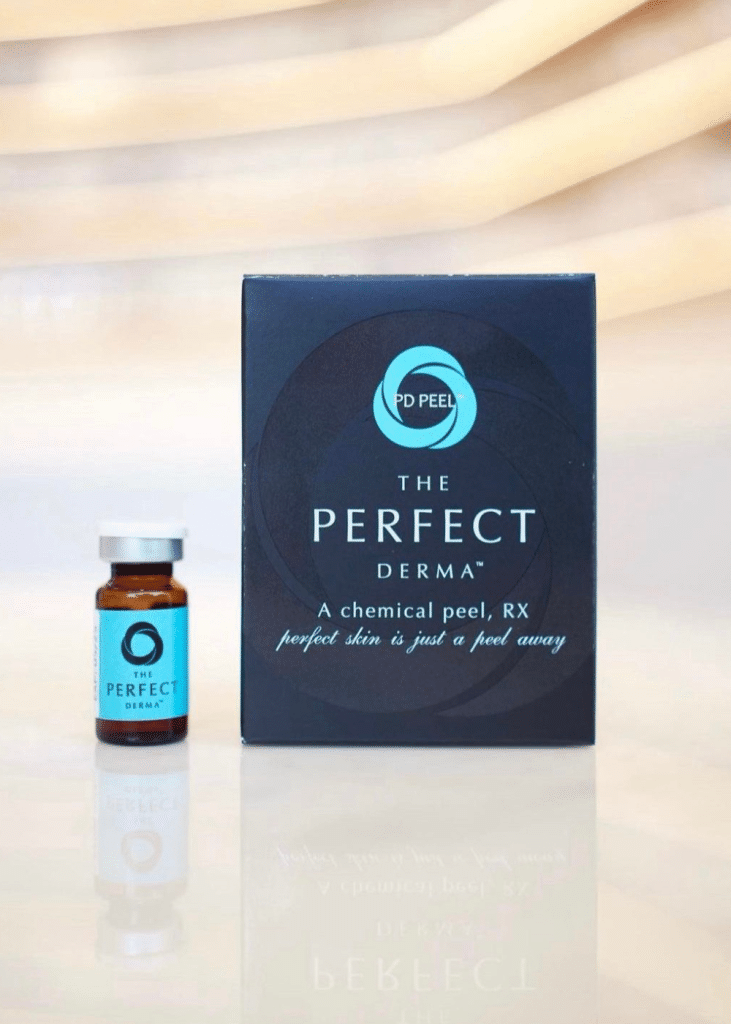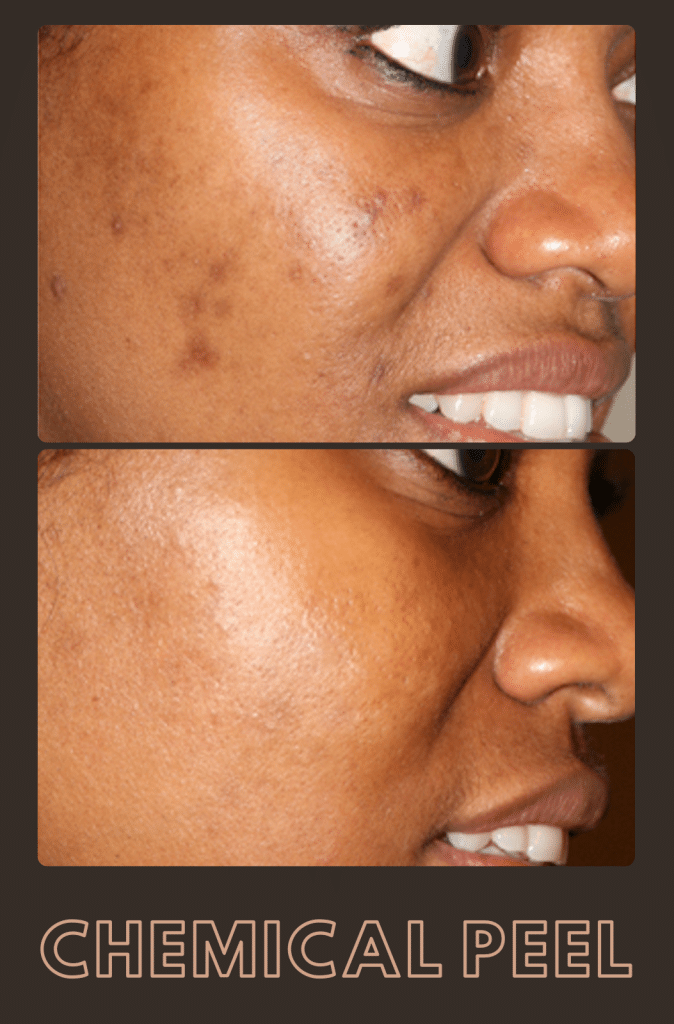
Chemical peels are one of the fastest ways to remove dead skin cells and encourage cell renewal. The process consists of applying a glycolic and/or salicylic acid solution on the skin, stripping away dull, dead skin cells and revealing youthful new skin.
The redundant cells then peel off naturally. The solution triggers collagen production, which boosts new cell growth, and makes the skin elastic, firm, and glowy. At the same time, the vitamins found in the solution nourish the skin, allowing for utmost revitalization.
Chemical Peel Overview:
- Improves the skin's color, clarity, tone and texture
- Reduces the appearance of fine lines and wrinkles
- Reduces effects of sun damage
- Helps to clear up breakouts
- Helps to hydrate the skin
- Improves the appearance of visible skin imperfections and superficial scars
- Boosts the effectiveness of your skincare products used at home by allowing products to penetrate deeper into the skin
- Stimulates new collagen and healthy skin cell growth, resulting in a radiant complexion

What Does a Chemical Peel Treat?
Many skin problems can be treated with a chemical peel. Nevertheless, it has been shown to be one of the best options for treating acne, sun damage, hyperpigmentation, and the consequences of photoaging.
Acne
Acne can plague both teens and adults. Blockages in the hair follicles are the most common cause of acne. The condition develops when excess oil and dead skin cells clog the pores. Visible symptoms include pimples, blackheads, and whiteheads on the face, neck, chest, and back.
Sun Damage
Exposing your skin to too much sun is both drying and damaging. Light and heat play a role in this process and may cause fine wrinkles, dryness, and loss of elasticity. In some cases, the side effects also include discoloration and brown spots.
Hyperpigmentation
This condition develops when the skin overproduces melanin. Freckles and brown spots tend to appear, and the skin develops a darker, uneven tone. Several factors can cause this issue, from too much sun exposure to disease, injuries, and genetics.
Photoaging
“Photoaging” refers to the process of the wear and tear caused to the skin by UVA and UVB radiation that accelerates the production of free radicals, making skin saggy, wrinkled, and dry. It is especially common in areas of the world where there is a lot of sunshine much of the year.
How Chemical Peels Are Used
A chemical peel is a fast, simple, and efficient treatment that eliminates dead cells from the outer layers of the skin. It entails applying a solution that consists of a specific combination of glycolic, lactic, and/or salicylic acid to the skin to trigger exfoliation and peeling.
The solution boosts collagen production to help rejuvenate the skin once the exfoliation is completed. The treatment is non-invasive and accelerates the regeneration of the skin while the vitamins found in the solution hydrate and help the skin heal.
How Long Does a Chemical Peel Treatment Last?
The procedure is quick, but the actual duration depends on the patient, the size of the treated area, and the desired depth of treatment. The peel should begin initiating exfoliation within 15 minutes.
When Will the Results Be Visible?
The number of treatments required is individual and depends on what the patient expects to achieve. Most people will need between four to six treatments to see improvement with at least two weeks between each treatment. Afterward, maintenance treatments may be scheduled every 8 weeks.
Are Chemical Peels Painful?
Not generally but there may be some mild pain depending on how deep the peel penetrates and the sensitivity of the patient. Deeper peels may cause discomfort to some people. Nonetheless, there are numbing agents that we can apply to temper any unpleasant sensation.
How Long Do the Results Last?
Again, that depends on your skin type and the intensity of the chemical peel. The effects of superficial peels should be visible for weeks. With deeper penetration, you can expect them to last for months.
Another important factor is how well you adhere to your at-home, daily skincare routine. With proper nourishment and sun protection, the effects of a chemical peel will last longer.
What Are the Possible Side Effects of the Treatment?
Some patients may feel irritation or a tingling sensation on their skin. Mild redness is also a possible side effect. However, none of these should last for more than a couple of days. The patient should be able to maintain their regular schedule.
The duration of the shedding process will depend on the skin type and the formulation of the chemical peel.
With mild peels, it usually ends after just a few days. If you get a deeper peel, it can last for two or three weeks. During that time, numbing creams will help with any discomfort.
What Kind of Care Is Required After a Chemical Peel?
In the first few days, patients should use mild, non-abrasive cleansers and sunblock. This should prevent any irritation or discomfort.
Once the skin peels off, it would be best to use antioxidant serums to maintain the results. Of course, sunscreen is essential in order to protect and take care of the skin.
